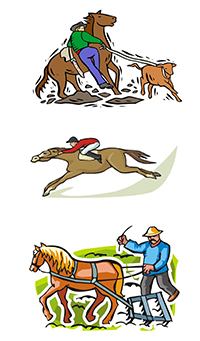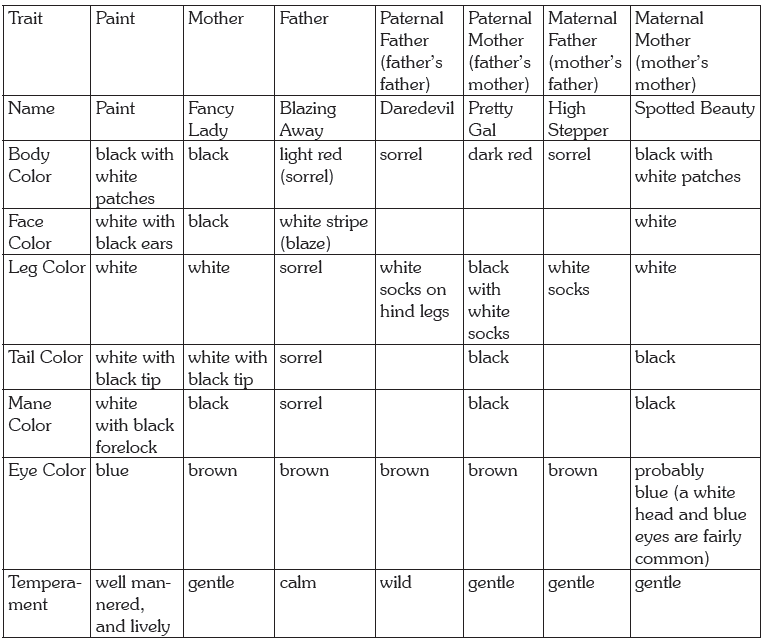Background Agricultural Connections
For thousands of years, livestock and crop plants have been selectively bred to perpetuate desirable characteristics. Although early agriculturalists did not understand genetics like we do today, they were able to observe that plants and animals tend to exhibit traits similar to those of their parents. By carefully choosing which plants to save seeds from and which animals to save for breeding, people have domesticated and improved the agricultural qualities of numerous plants and animals. Today, modern technology allows plant and animal breeders to more precisely select for desirable traits and more rapidly develop new traits, but the basic pattern of offspring exhibiting traits inherited from their parents is still at the foundation of all breeding programs.
Horse breeders are very aware of family traits. The traits for which they breed horses can be visible, such as hair coloring and muscularity, or invisible, such as temperament and health characteristics. Over time, different breeds of horses have been developed to excel at different types of work. For example, there are many breeds of draft horses, which are large, muscular, calm, and gentle animals. These traits make them well adapted for working with people and pulling heavy loads. For many years, horses were the main source of power for tilling fields and for transportation of people and materials. Today, draft horses are still widely used to pull sightseers in carriages, and some farmers even continue to use horses to work their fields, although tractors get the work done much more quickly.
In contrast to draft horses, Thoroughbreds are a specific breed that has been selected specifically for racing. Horse racing is an ancient sport and has probably been practiced for as long as horses have been domesticated. The Thoroughbred was developed in 18th century Britain for speed and stamina. These horses are often considered “hot-blooded” and spirited. They are the most highly valued breed of horse today. Thoroughbreds are often used in crossbreeding to create new breeds or improve existing breeds.

